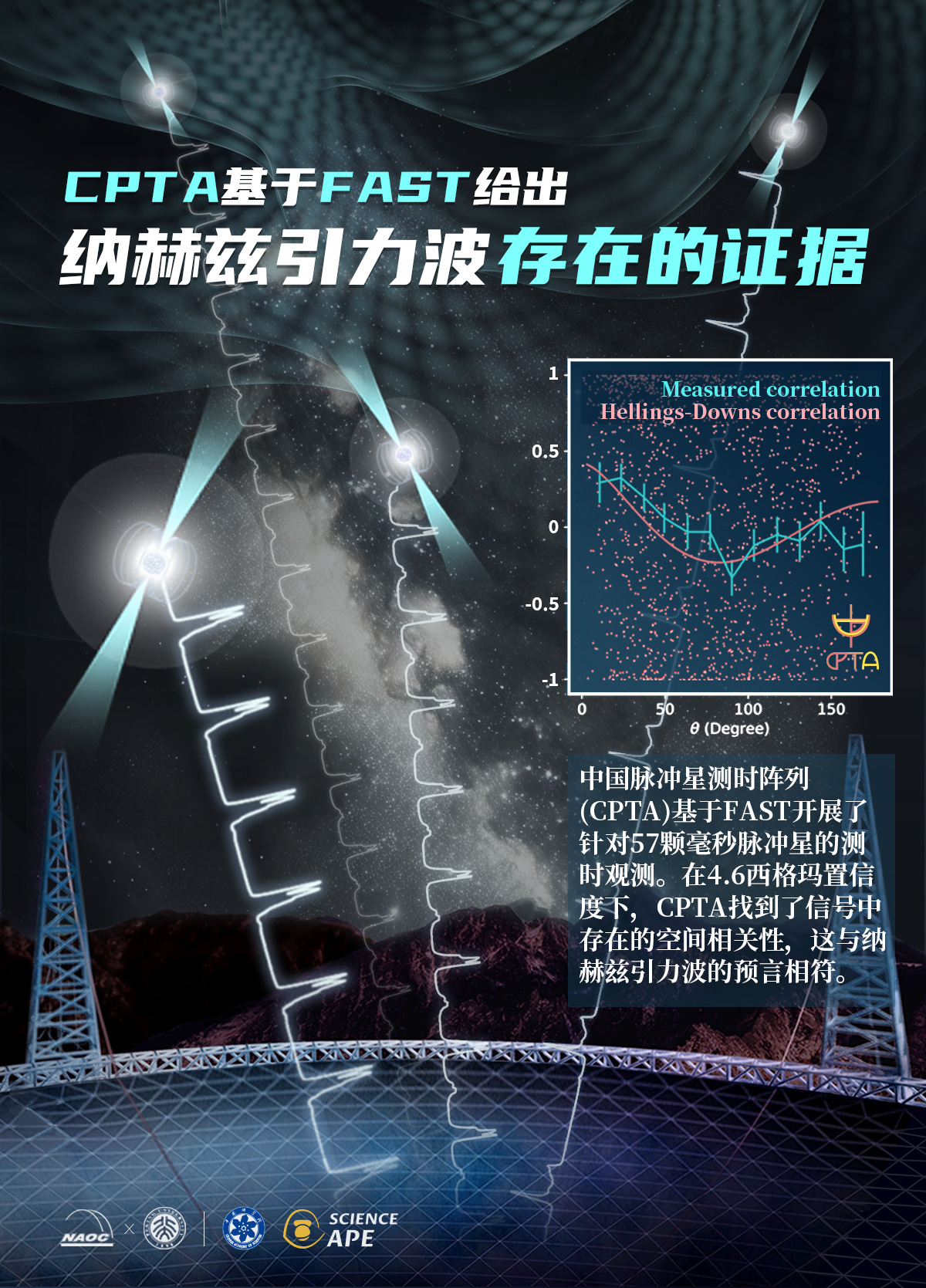Chinese scientists find evidence of nanohertz gravitational waves

Chinese scientists have recently found key evidence of the existence of nanohertz gravitational waves, based on pulsar timing observations carried out by the Five-hundred-meter Aperture Spherical Telescope, or FAST.
The research was conducted by the Chinese Pulsar Timing Array, or CPTA, which comprises researchers from the National Astronomical Observatories of the Chinese Academy of Sciences and other institutes. The findings were published online on Thursday morning in the Chinese journal Research in Astronomy and Astrophysics.
Gravitational waves are the "ripples" produced by massive objects such as black holes as they rapidly move through the fabric of spacetime.
Though their signal is weak, the waves can be used to detect dark matter in the universe.
Detecting gravitational waves with frequencies as low as nanohertz will help astronomers understand the origins of the structure of the universe and discover the growth, evolution and merger of the most massive celestial bodies in the universe — supermassive black holes.
However, nanohertz gravitational waves are very challenging to detect due to their extremely low frequency. Their corresponding periods could reach several years, and their wavelengths could be up to several light-years.
Thus, the only known way to detect them is by using large radio telescopes to conduct long-term observation of millisecond pulsars with extreme rotational stability.
In the study led by the CPTA, the researcher team monitored 57 millisecond pulsars with regular cadences for 41 months by taking advantage of the high sensitivity of FAST.
Eventually, the team found key evidence for quadrupole correlation signatures compatible with the prediction of nanohertz gravitational waves at a 4.6-sigma statistical confidence level — a false alarm probability of two in a million.
Li Kejia, corresponding author of the article and a researcher at the CAS' National Astronomical Observatories, said the research team is currently unable to identify the astronomical sources of current signals due to the relatively short observation time span of the current data, but this will be resolved as the time spans of subsequent observation data increase.
Hunting nanohertz gravitational waves is one of the major focuses of current physics and astronomy researchers. Research teams from the United States, Europe and Australia have been collecting pulsar timing data for more than 20 years, while Chinese scientists began doing so in 2019 using FAST.
By utilizing FAST's high sensitivity and strong ability to monitor pulsars, the CPTA said it achieved breakthroughs at the same time other international researchers did, including those from the North American Nanohertz Observatory for Gravitational Waves, the European-Indian Pulsar Timing Array and the Australian Parkes Pulsar Timing Array.
Those three foreign teams also announced similar results on Thursday.
Photos
Related Stories
- Astronomers find clues to source of fast radio bursts
- China's FAST telescope wows visitors
- "China Sky Eye" under maintenance in SW China's Guizhou Province
- China's gigantic telescope identifies over 740 pulsars
- China's FAST discovers largest atomic cloud in universe
- China's FAST telescope spots huge atomic gas structure
- China's FAST telescope films magnetic fields nearby fast radio burst
- A bird's eye view of the "China Sky Eye"
- In pics: China's FAST telescope in Guizhou
- Astronomy gives impoverished township in SW China’s Guizhou a facelift
Copyright © 2023 People's Daily Online. All Rights Reserved.









